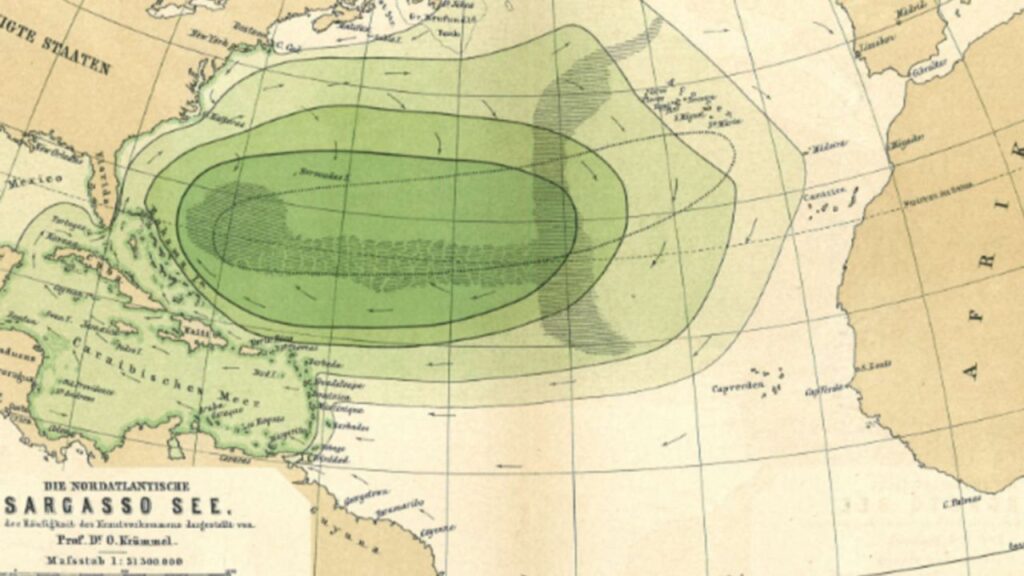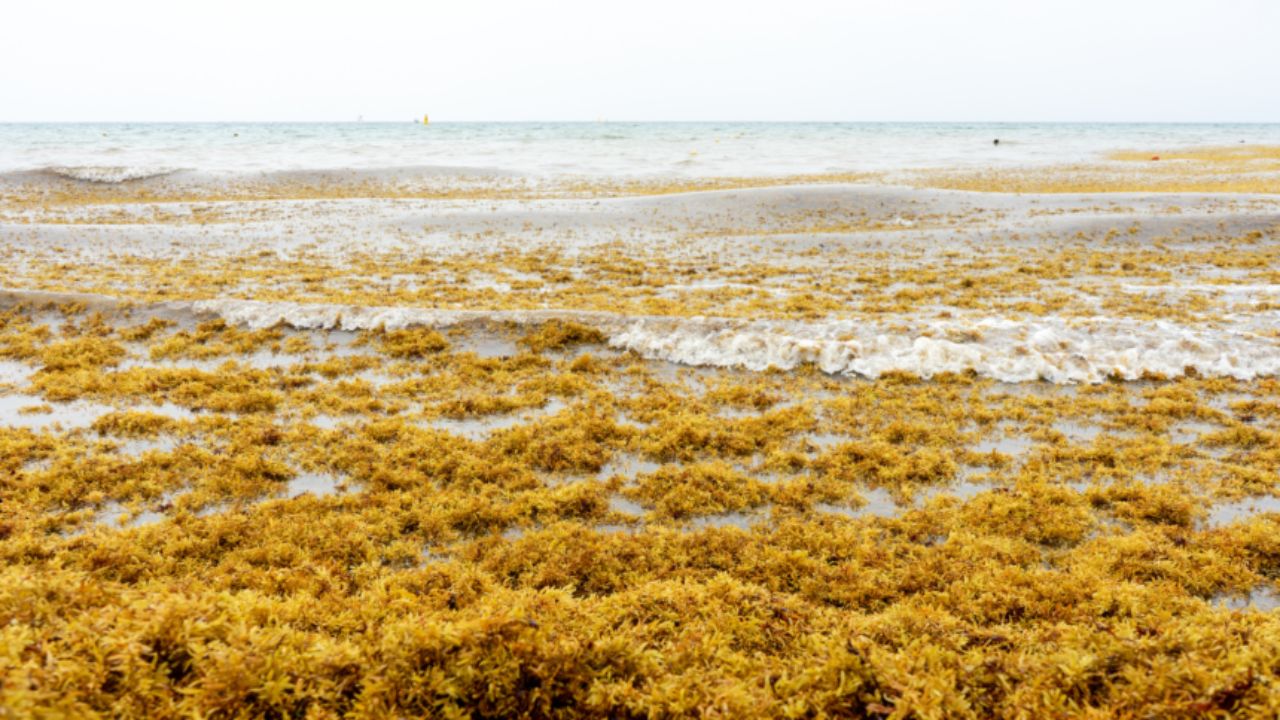There is one body of water on Earth that doesn’t touch any shoreline. Forget the beach.
The area in the North Atlantic Ocean is called the Sargasso Sea, and its borders are very different from those of other areas.
The edge isn’t made of land, but water currents, so there’s no Sargasso beach to visit.
You might not want to, though. Brownish-yellow seaweed called Sargassum covers the water and makes it smell awful. It has also turned into a nightmare man-made island called the North Atlantic Garbage Patch.
Even so, it is still an important place for ecology, history, and even culture.
The unique sea is protected by a special group that calls it a “haven of biodiversity” that is very important to the environment of the whole North Atlantic.
The Sargasso Sea Commission says that rare species of eels go to the sea to breed. Sperm and humpback whales, as well as tuna and other fish, migrate through the sea.
There are also many fragile and endangered species that depend on it for their survival, such as the Porbeagle shark and several types of turtles.

It is a “golden floating rainforest,” as the famous marine scientist Dr. Sylvia Earle put it.
Not only does the sea seem like a myth to oceanographers, but it’s also the stuff of stories.
In 1492, Christopher Columbus wrote in his voyage journals about meeting the strange mats of Sargassum for the first time.
He wrote about how his sailors were afraid that the seaweed would bind them and drag them to the bottom of the ocean, or that the calm seas (doldrums) in the Sargasso Sea would make it impossible for them to get back to Spain.
People have been afraid of the sea for hundreds of years, and the fact that it is connected to the famous Bermuda Triangle made it even more famous.
The triangle is in the southwest part of the Sargasso, between Bermuda, Florida, and Puerto Rico. It is known for being a place where ships and plans would disappear for no reason.
The North Atlantic Current flows through the sea from north to south, the Canary Current flows through the sea from east to west, and the North Atlantic Equatorial Current flows through the middle of the sea.
Ocean gyres are these circle currents that trap bodies of water inside them. In “Twenty Thousand Leagues Under the Sea,” Jules Verne called this “a perfect lake in the open Atlantic.”
Still, this “lake” isn’t perfect right now.
Shipping is now a real threat to the Sargasso. Ships make noise underwater, damage Sargassum mats, and release chemicals. Overfishing, pollution from floating trash, and climate change are also problems.
Because the ocean gyres move around, plastic swirls into the water and joins the disgusting garbage patch that has already formed there.
It is thought that this huge memorial to people’s harmful ways will stretch for hundreds of kilometers and have 200,000 pieces of trash per square kilometer.
Things are getting worse.
A new study released on December 8 found that the sea is warmer, saltier, and more acidic than it has ever been since records began in 1954. This could have a big effect on other ocean systems.
Nicholas Bates, a chemical oceanographer who wrote the study, said that the ocean is warmer now than it has been in “millions and millions of years.” He said that this could have big effects on marine life and the global water cycle, affecting “where it rains or where it doesn’t.”
According to Prof. Bates’ interview with LiveScience, global warming may have hit a point where it can’t be stopped for a long time.
- Rising Waters, Sinking City: Scientific Confirmation of New York’s Subsidence.
- Tonga has issued a tsunami warning after an earthquake measuring 7.3
- Under the crust of the Earth, scientists have found a huge pool with more water than on the surface.
- What makes an earthquake happen? These are the different kinds of earthquakes and why they happen.
- The climate crisis is on track to displace one-third of humanity from its most hospitable habitat.









Comments are closed.